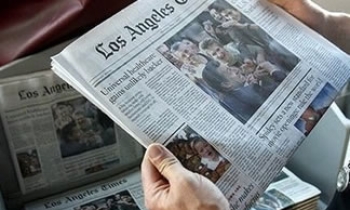When it launched its first Web sites a year and a half ago, Backfence held the promise of creating a collection of virtual town squares. By letting residents post news about their communities, it joined the emerging citizen journalism movement and was the first such start-up to land a sizable amount of money from private investors who shared its vision.
Now Vienna-based Backfence has lost three executives, including its co-founder, and is struggling to reinvent its business model to stay afloat.
Most community news sites like Backfence, which rely on reader-generated content to draw advertising dollars, are still trying to make a profit off "hyperlocal" Internet publishing. Strings of neighborhood sites haven't been able to attract enough users to persuade advertisers to bank on such targeted media outlets, analysts said.
Backfence created its first two community sites in McLean and Reston in May 2005, shortly before receiving $3 million in funding from several local investors and national firms, including Manhattan-based SAS Investors and the Omidyar Network, an investment firm created by eBay founder Pierre Omidyar. Backfence went on to launch 11 more sites in the suburbs of Washington, Chicago and San Francisco.
The company had planned to roll out at least three more sites by the end of 2006, but the management team reached an impasse with investors regarding the best way to enter new markets. Susan DeFife, who co-founded the venture with Mark Potts, resigned last week after a "difference of opinion about the strategic direction of the company," she said. DeFife said she and former Backfence vice presidents Amanda Graham and Bob Kelly are starting a consulting firm to help local firms reach potential customers through the Internet. Mark Potts, a former Washington Post staffer who left Backfence in October, has returned to temporarily run the company.
"It always ends up being so much different than the way you imagine it to be," Potts said. Over the next three months, he said, Backfence will add more features, such as social networking, online video and mapping. "We haven't rolled out as quickly as we'd wanted to. But we think the basic concept we went after is absolutely still the right place to be."
Media analysts agree that many readers are looking for hyperlocal content, but they say most citizen-journalism sites aren't mature enough to tap into the lucrative local advertising markets.
"Realistically, it's going to take close to 10 years for the business models to be there and for there to be enough advertisers willing to give money to hyperlocal start-ups," said Vin Crosbie, managing partner of Digital Deliverance, a Connecticut media consulting firm. "Backfence's problem is that it was too early."
Internet advertising revenues reached $4.2 billion last summer, a 33 percent increase over the revenues earned during the same period a year earlier, according to the Interactive Advertising Bureau.
DeFife said Backfence sites had sold 550 ads to local businesses since April and got 2 percent of community members to register. "We were making significant strides," she said.
Others say the company has a long way to go to make a dent in its targeted local markets.
"They haven't really been able to capture the genuine interest of local residents on passionate issues like crime," said Peter Krasilovsky, a consultant who has been following Backfence's development. Community news sites have to invest in the quality of the content before advertisers will take notice, he added.
Josh Grotstein of SAS Investors said Backfence is still trying to find the most efficient way to bring new sites to more communities. "We remain very upbeat on the whole face of citizen journalism," he said.
Some investors, however, aren't as confident. Frank Bonsal, one of Backfence's local angel investors, said arguments between backers and founders has "destroyed the company."
"It's downsized to a modest team of people and they're out of money," he said. "At this point, I don't look for any return or any prospect of recovery."









